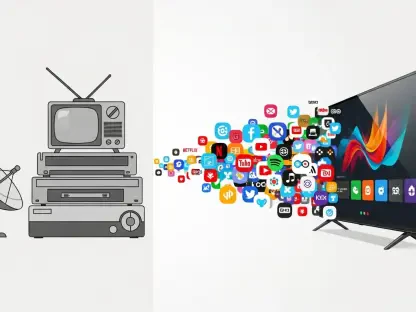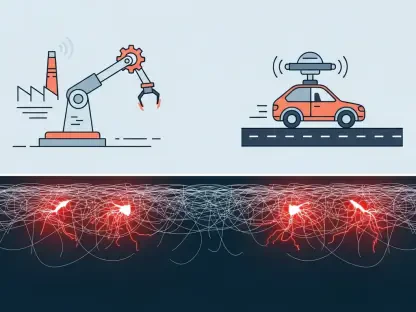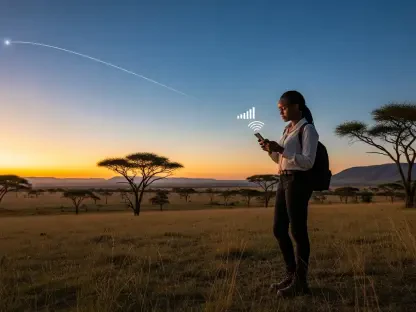Introduction
Imagine a world where a farmer in the remote plains of Montana can stream high-definition agricultural tutorials, or a student in rural Alaska can attend virtual classes without a glitch, all thanks to advancements in satellite broadband. This vision is becoming a reality with SpaceX’s Starlink leading the charge as a transformative force in bridging the digital divide. The rapid ascent of low-Earth orbit (LEO) satellite technology is not just a technological marvel but a catalyst for sweeping policy changes in the telecommunications landscape. As national connectivity goals evolve, the debate over integrating satellite broadband into official broadband reporting frameworks has intensified. This analysis dives into the current discussions, key players, policy ramifications, expert perspectives, and the future role of satellite broadband in shaping U.S. connectivity metrics.
The Rise of Satellite Broadband in National Connectivity
Growth Metrics and Adoption Trends
The expansion of LEO satellite broadband has been nothing short of remarkable, with Starlink alone surpassing 2 million subscribers across the U.S. This milestone reflects a staggering 50% global increase in user base within a single year, starting from 2025, as reported by industry analyses. Such growth stands in stark contrast to the relatively flat trajectory of traditional cable and fiber subscriptions, which struggle to penetrate underserved regions. According to recent FCC notices, satellite services are outpacing legacy providers in areas where infrastructure costs deter conventional deployment, signaling a shift in how Americans access the internet.
This trend is further underscored by comparative data showing satellite broadband’s rising share in the market. While cable and fiber remain dominant in urban centers, their growth has stagnated due to saturation and high maintenance costs. In contrast, satellite technology offers a scalable solution, rapidly gaining traction among rural households and small businesses, as evidenced by subscription spikes in FCC-documented unserved areas. This divergence highlights a pivotal moment in telecommunications, where satellite services are redefining accessibility benchmarks.
Real-World Impact and Applications
In remote corners of the U.S., satellite broadband is already making a tangible difference, delivering connectivity where traditional networks have long failed. Starlink, for instance, has become a lifeline in isolated regions, enabling telehealth services for rural clinics and online learning for students far from urban hubs. These deployments illustrate the technology’s potential to close longstanding gaps, ensuring that geography no longer dictates digital access.
A concrete example lies in SpaceX’s participation in the Broadband Equity Access and Deployment (BEAD) program, which has allocated significant funding to cover over 200,000 locations nationwide. This initiative, backed by federal support, targets underserved communities, providing high-speed internet to areas previously deemed unreachable by terrestrial means. The impact is profound, as entire towns gain access to economic opportunities and essential services previously out of reach.
Beyond individual cases, the broader application of satellite broadband extends to disaster recovery and emergency response. In regions prone to natural disasters, where terrestrial infrastructure often falters, satellite connections have proven invaluable for maintaining communication during crises. This versatility adds another layer to the argument for recognizing satellite services as a critical component of national connectivity strategies.
Stakeholder Perspectives on Policy Inclusion
The debate over integrating satellite broadband into FCC reporting frameworks reveals a spectrum of opinions among key stakeholders. Joe Bissonnette, SpaceX’s principal for satellite policy, advocates for technology neutrality, arguing that excluding LEO services from broadband availability metrics distorts the true state of connectivity in America. Bissonnette emphasizes that satellite technology, with its explosive growth, deserves equal consideration alongside traditional providers to reflect an accurate national picture.
On the other side, Brian Hurley of ACA Connects, representing smaller cable operators, raises concerns about the limitations of satellite services. Hurley contends that capacity constraints and scalability issues make LEO broadband less reliable than terrestrial options like cable and fiber, which consistently meet higher speed thresholds. This perspective prioritizes established technologies in FCC evaluations, suggesting that satellite’s role should remain supplementary rather than central to deployment analyses.
Adding depth to the discussion, policy analyst Blair Levin critiques the inconsistent treatment of satellite services across funding and reporting frameworks. Levin points out the contradiction in policies where satellite coverage is eligible for grants under programs like BEAD but excluded when defining “served” areas for eligibility purposes. This discrepancy, Levin argues, creates confusion and inefficiency, highlighting the urgent need for a cohesive policy approach that aligns with the realities of modern broadband technologies.
Future Implications of Satellite Broadband Policy Shifts
Looking ahead, the potential inclusion of LEO satellite services in FCC broadband availability metrics could reshape how connectivity is measured and prioritized. If fully recognized, satellite data would likely paint a more comprehensive picture of internet access, particularly in rural zones where traditional metrics fall short. This shift could accelerate efforts to close the digital divide by acknowledging areas served by satellite as connected, thus influencing policy focus and resource distribution.
However, challenges loom on the horizon, including capacity limitations that critics argue could hinder satellite broadband’s scalability. Unlike fiber, which offers near-unlimited bandwidth in dense areas, satellite services face constraints that may struggle to meet growing demand. Additionally, policy inconsistencies, such as varying definitions of “served” across programs, risk creating fragmented strategies that undermine long-term connectivity goals, necessitating careful calibration by regulators.
The broader implications extend to funding mechanisms like the Universal Service Fund (USF) and the Rural Digital Opportunity Fund (RDOF). Should satellite coverage gain equal footing in FCC reports, rural areas served by LEO technology might be reclassified, potentially reducing the urgency for additional high-cost terrestrial projects. This reallocation could redefine funding priorities, impacting both providers and communities reliant on such support, while sparking debates over equity and effectiveness in addressing unserved regions.
Conclusion
Reflecting on the journey of satellite broadband, it has become evident that its rapid ascent, marked by Starlink’s monumental subscriber growth, has ignited fierce debates over its place in FCC reporting. Stakeholder discussions, ranging from SpaceX’s push for recognition to ACA Connects’ cautionary stance, have underscored the tension between innovation and reliability. The policy and funding implications, particularly for programs like USF and RDOF, have revealed the high stakes of these shifts. Moving forward, policymakers must prioritize crafting adaptive frameworks that embrace a technology-neutral stance, ensuring that emerging solutions like LEO satellite services are neither overlooked nor overestimated. A balanced approach, grounded in rigorous data and inclusive dialogue, remains essential to harness this technology’s potential while addressing its limitations, paving the way for a truly connected nation.









